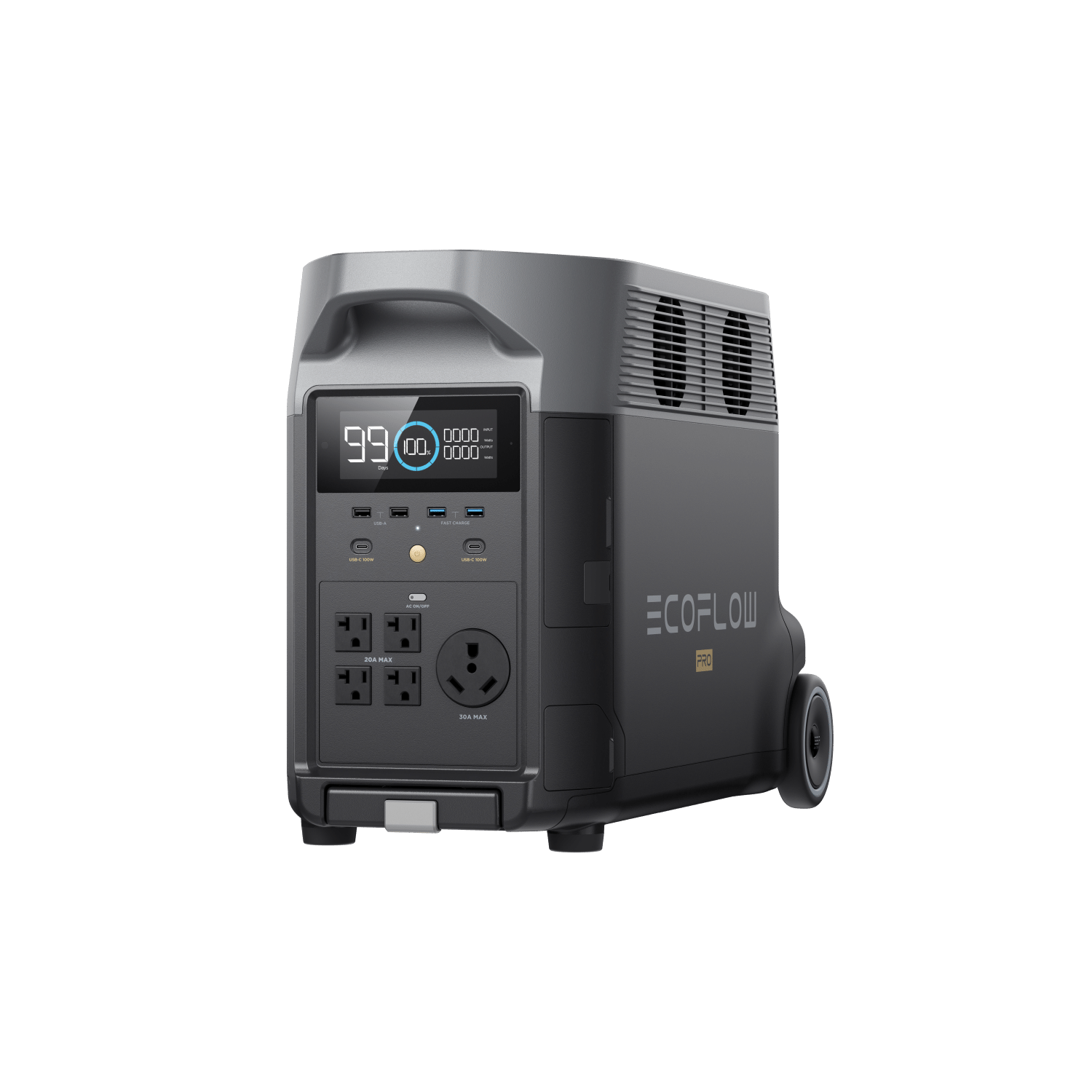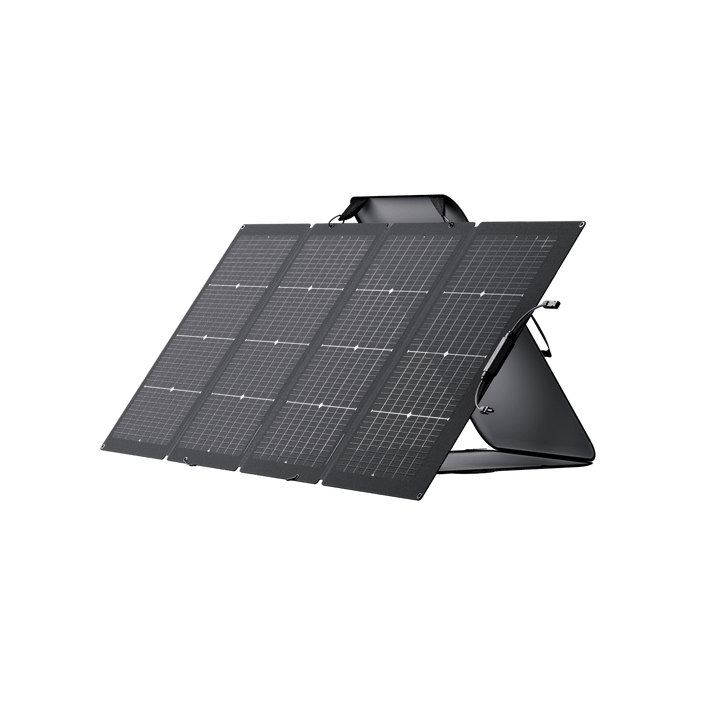Solar power - Three levels of grid independence
Understanding Solar Panels: Harnessing the Sun’s Energy
Solar panels work by converting sunlight into electricity. This process, known as photovoltaic (PV) conversion, involves solar cells made from semiconductor materials, typically silicon. When sunlight hits these cells, it knocks electrons loose, creating a flow of electricity. This clean and renewable source of energy is becoming increasingly popular due to its environmental benefits and cost savings over time.
Why Purchase Solar Panels?
Investing in solar panels is a step towards sustainable living. They significantly reduce carbon footprint by replacing or supplementing traditional energy sources. In the long run, despite the initial investment, solar panels are cost-effective due to reduced electricity bills and potential government incentives. They are also a resilient power source, particularly valuable in areas with frequent power outages.
Portable Solar Power Banks: A Convenient Solution
:max_bytes(150000):strip_icc()/91pFv5BD3nL._AC_SL1500_-61b316d14f474de3ab3347cc6d05268f.jpg)
One practical and increasingly popular application of solar technology is the portable solar power bank. These devices are particularly appealing for their convenience, portability, and versatility.
What is a Portable Solar Power Bank?
A portable solar power bank is a compact device equipped with solar panels and a storage battery. It harnesses sunlight, converts it into electrical energy, and stores it in the battery for later use. You can use this stored energy to charge electronic devices like smartphones, tablets, and cameras, making it an ideal companion for outdoor activities, travel, or emergency situations.
Benefits of a Portable Solar Power Bank
- Eco-Friendly: Utilizes renewable energy, reducing reliance on fossil fuels and minimizing your carbon footprint.
- Convenience: Allows for charging devices on the go, especially in areas without access to electrical outlets.
- Emergency Readiness: Essential in power outages or disaster situations, providing a reliable power source for critical communication devices.
- Cost-Effective: Over time, it reduces the need for electricity from the grid, saving money on energy bills.
- Low Maintenance: Requires minimal upkeep, with no moving parts and resistance to wear and tear.
Choosing the Right Solar Power Bank
When selecting a solar power bank, consider the following factors:
- Capacity: Measured in milliampere-hours (mAh), it determines how much charge the bank can store.
- Portability: Size and weight are crucial for ease of carrying.
- Durability: Look for sturdy construction, especially if you plan to use it outdoors.
- Charging Time: Understand how long it takes to charge the power bank itself.
- Output: Ensure it provides enough power to charge your specific devices.
Usage Tips
- Maximize Sun Exposure: Place the power bank in direct sunlight for efficient charging.
- Regular Charging: To maintain battery health, regularly charge the power bank, even when not in use.
- Device Compatibility: Check if your devices are compatible with the power bank’s output.
Portable solar power banks are a testament to the versatility and practicality of solar technology in our daily lives. By integrating such eco-friendly solutions, we not only contribute to environmental sustainability but also embrace a more resilient and independent way of living. Always remember to consult with a professional, like an electrician, when considering larger-scale solar installations.
Solar Generator System: Perfect for long trips or power outages
What is a solar generator system?

 "
"A solar generator system consists of a portable solar panel and a power station (large battery). Companies such as Bluetti, EcoFlow, and Jackery are known for making good quality power stations. Some power stations can output up to 3600Wh. This is enough to power a modern appliances such as refrigerators and electric grills. This amount of power could be very useful when travelling (e.g. RV-ing) or in a power outage situation. The addition of a solar panel drastically increases the usability of this product, as it allows you to be fully untethered from the grid. Depending on the size of the solar panel, it could take anywhere from a few hours to a few days to fully charge the battery.
Pros
- Higher Power Capacity: Power stations can output up to 3600Wh, significantly more than handheld batteries, enabling them to power larger appliances and devices for extended periods.
- Renewable Energy Source: Solar panels provide a sustainable and eco-friendly way to generate electricity, reducing reliance on the electrical grid.
- Increased Independence: The capability to recharge via solar energy allows for greater autonomy, especially valuable during travel or in power outage situations.
- Extended Usability: Solar panels extend the system’s usability by enabling off-grid charging, offering flexibility in various environments.
- Versatility and Mobility: These systems are designed for outdoor activities, emergency preparedness, and remote applications, providing a versatile and mobile power solution.
- Cost-Effective Over Time: Despite the upfront investment, solar generator systems can save money on electricity and reduce the need for disposable batteries.
- Environmentally Friendly: Utilizing solar energy contributes to a reduced carbon footprint and less dependence on fossil fuels.
Cons
- Initial Cost: The upfront cost of a high-quality solar generator system can be significantly higher than that of simple handheld batteries or smaller power banks.
- Size and Weight: Solar generator systems, especially those with high power capacities, are generally bulkier and heavier than handheld batteries, which can limit their portability.
- Dependence on Weather: The efficiency of solar charging is highly dependent on sunlight availability, making it less reliable in cloudy or rainy conditions.
- Longer Charging Times: Charging a power station solely via solar panels can take several hours to a few days, depending on the panel size and sunlight intensity, which might not be ideal for quick turnarounds.
- Complexity: Setting up and optimizing a solar generator system for efficient use can require more knowledge and effort compared to the simplicity of using handheld batteries.
- Maintenance and Durability: While maintenance is generally low, solar panels and power stations do require some maintenance (such as cleaning), and their exposure to poor outdoor conditions can affect longevity.
Considering these pros and cons can help in determining whether a solar generator system is the right choice for your specific needs and circumstances.
Home Solar System:

Why get a home solar installation?
Home solar systems have the advantage of being low maintenance and significantly reducing your power bill. Programs such as efficiency Nova Scotia, provincial and federal rebates can make a home solar installation more than pay for iteself over the course of the panels’ lifetime. Most solar installations have a lifetime of about 20 years (depending on manufacturer).
Another consideration is the increase in property value that comes with solar installations. Homes equipped with solar energy systems often sell at a premium, reflecting the future savings on electricity bills. This can make solar installations an attractive investment for homeowners looking to improve their property’s marketability.
Given the likely future increase in energy prices, home solar installations may be a very good investment in the long-run.
Pros
- Reduced Power Bills: Solar installations significantly cut down on electricity expenses, offering long-term savings.
- Low Maintenance: Once installed, solar systems require minimal upkeep, mainly involving occasional cleaning and inspections.
- Financial Incentives: Rebate programs at both provincial and federal levels can substantially offset the initial cost.
- Increased Property Value: Homes with solar energy systems can sell at a higher value, reflecting the desirability of reduced utility costs.
- Environmental Impact: Solar energy is clean, renewable, and reduces your energy consumption
- Energy Independence: Reduces reliance on the grid, offering protection against rising energy prices and supply disruptions.
- Longevity: With lifespans averaging around 20 years, solar panels are a long-term investment.
Cons
- Upfront Cost: Despite rebates, the initial expense for solar panel installation can be significant.
- Space Requirements: Effective solar installations require sufficient, properly oriented roof space, which may not be available in all homes.
- Aesthetic Concerns: Some homeowners may find the appearance of solar panels unattractive or not in keeping with their property’s aesthetic.
- Weather Dependent: Solar energy generation is contingent on sunlight; cloudy days and long nights can reduce efficiency.
- Installation Complexity: The process can be complex, involving permits, inspections, and potentially upgrading the home’s electrical system.
- Variable Savings: Savings can vary based on location, energy costs, and system size. It may take several years to break even on the initial investment.
- Technology Advances: Rapid advancements in solar technology might make existing installations less efficient compared to newer options over time.
Considering these pros and cons can help homeowners make an informed decision about whether a solar energy system is right for their home, lifestyle, and financial situation. As the technology evolves and more incentives become available, the benefits are increasingly outweighing the drawbacks for many.